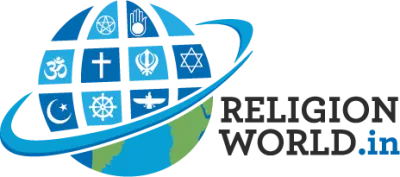Results of a Pilot Yoga Intervention to Improve Pediatric Cancer Patients’ Quality of Life and Physical Activity and Parents’ Well-being

Background and Purpose: Yoga is increasingly proving beneficial in improving distress, pain, physical activity, and health-related quality of life (QOL) in adult patients with cancer, but few studies have examined the efficacy of yoga therapy for pediatric patients with cancer. We aimed to study the feasibility and preliminary efficacy of a yoga intervention for pediatric cancer patients in active treatment and for their families.
Methods: We conducted 2 separate studies: (1) a survey of 20 patients and parents regarding preferences (eg, convenient days and times), experiences, and expectations regarding yoga (including barriers and positive expectancies); and (2) an 8-week single-arm clinical trial of a yoga intervention in 10 children and their family members. Targeted outcomes of the clinical trial were patients’ fatigue, QOL, and physical activity. Secondary outcomes were caregivers’ well-being (QOL and burden).
Results: Study 1 demonstrated fairly high levels of interest from patients and family members. Study 2 demonstrated improved patients’ and parents’ QOL pre- to post–yoga intervention.
Conclusions: Parents and patients found the intervention highly acceptable. Conducting the intervention in the context of active cancer treatment proved feasible. Despite limited statistical power, QOL of patients doing yoga improved. Our findings support the notion that yoga for pediatric cancer patients during active treatment is feasible and potentially helpful in improving both patients’ and parents’ well-being.
Courtesy : https://journals.lww.com/rehabonc/pages/default.aspx
***************
According to the American Cancer Society,1 approximately 10 380 children living in the United States younger than 15 years receive a diagnosis of cancer annually. Increasingly effective treatments of pediatric cancer have dramatically improved survival rates.2 Children with cancer and their families also face many persistent challenges, including demanding medical regimens, fatigue, invasive and painful medical procedures, aversive treatment side effects, disruption of daily routines and social and family roles, and the ever-present threats of death.3 Research suggests that children often consider treatment procedures to be more traumatic than cancer itself.4,5
Research on the well-being of pediatric psycho-oncology patients is increasing, but nearly all of this work focuses on survivors who have completed primary treatment. Research focusing on the on-treatment period suggests that many families experience negative psychosocial sequelae, including high levels of distress, anxiety, irritability, impaired family functioning, and compromised quality of life (QOL).3,6,7 Furthermore, children with cancer and their families are confronted with pervasive stressors including significant side effects, considerable changes in daily activities, and disruption of social and family roles.8 Parental uncertainty about their child’s future, combined with distress for their child’s suffering, contributes to high levels of stress in parents of children with cancer. These significant stressors put this population at risk for short- and long-term psychological difficulties.9,10
Families report that symptoms of anorexia, nausea, vomiting, and pain are not adequately treated with conventional medicine.11 With the dramatic reduction of childhood cancer mortality rates in the past 4 decades,12 better treatment of patients’ psychosocial problems and improving their QOL are imperative. These are not only goals but may also influence treatment adherence and physical outcomes. Given advances in pediatric cancer survival rates, the importance of support for the wide range of treatment-related challenges incurred by children and their families has increased. As a result, integrative medicine has received an increasing amount of attention in hopes of promoting holistic health and wellness for this growing group of survivors.13
YOGA AS AN EFFECTIVE ADJUNCT TREATMENT
Yoga is emerging as an effective complementary therapy in adult oncology. It comprises multiple domains including ethical disciplines, physical postures, meditation, and breathing practices with the goal of unifying body and mind. Several recent literature reviews have documented myriad benefits for adult cancer patients, including reducing fatigue, insomnia, depression, and stress and improved QOL, all of which suggest that it offers an effective, low-cost, and highly disseminable complementary treatment.14,15 Yoga may be especially helpful for cancer patients, given that it can be practiced anywhere and is easily modifiable to physical limitations by accommodating yoga in a hospital bed, chair, or wheelchair.
Little is known about the potential benefit of yoga for pediatric or adolescent oncology patients facing long-term illness and hospitalization. The few published studies have all been favorable in terms of feasibility of providing yoga.16,17 For example, Diorio and colleagues18,19 have presented extensive data on feasibility of individualized yoga for pediatric patients undergoing stem cell transplants, and several have demonstrated some preliminary efficacy. In a sample of 5 children hospitalized for pediatric cancer treatment, Geyer and colleagues20 found evidence of improved gross motor functioning across 5 sessions of yoga. In 16 children and adolescents hospitalized for cancer and including their parents, Thygeson and colleagues2 found that a single session of yoga showed reductions in anxiety from pre- to post–yoga session for adolescents and parents. This growing body of literature suggests that yoga may be helpful for pediatric cancer patients in active treatment.21,22 Only one study included parents/caregivers in the yoga intervention, and no study has assessed parental/caregiver well-being as part of a yoga intervention.1 Furthermore, none of the extant yoga studies for pediatric cancer patients included an objective activity assessment such as actigraphy.
METHODS
We conducted 2 separate, consecutive studies. Study 1 elicited information on feasibility and acceptability of the intervention and preferences for the yoga intervention delivered in study 2.
Study 1: Survey of Patient/Parent Preferences and Expectations
To maximize participation in a yoga intervention, we first needed to understand how patients and their families perceived yoga and their preferences regarding enrollment in a yoga program. We used the results of study 1 to inform the format and scheduling of the yoga intervention in study 2.
Participants. Participants for study 1 were patients and their parents who met the following criteria: (a) children aged 8 to 18 years, inclusive (due to the age validity for the instruments and measures); (b) child’s cognitive ability at least at an 8-year-old level; (c) parents older than 18 years; (d) patient currently undergoing cancer treatment (eg, chemotherapy, radiation therapy); (e) patient speaking English; (f) parent speaking English; (g) patient medically cleared to participate in yoga; and (h) parent physically able to participate in yoga. Participants were identified via clinic rosters to determine eligibility.
Recruitment. Participants were recruited in the Connecticut Children’s Medical Center hematology/oncology clinic before or after clinic appointments by research personnel. Once consented, they participated by completing the brief survey.
Measure. We developed a brief survey to determine level of interest in participating in a yoga trial, previous experience with yoga, perceived helpfulness or risks of yoga, and barriers to participating (eg, time, difficulty traveling, illness demands, work schedules). Parents were also asked about best times, days, and format (eg, individual vs group sessions).
Study 1: Results
Participants included 20 pediatric patients and 20 parents/guardians. Demographics are shown in Table 1. Table 2describes result of reported barriers to currently doing yoga. Responses regarding their experiences and preferences of those 10 patients who had practiced yoga are shown in Table 3, and responses of the 20 parent are shown in Table 4. Half of patients reported they had never done yoga before, and half reported a history of participating in yoga. Among the 10 patients who had previously practiced yoga, the number of times they had practiced ranged widely. Nevertheless, a community studio was by far the most common choice of parents, who also expressed a strong preference for group sessions. We tabulated the times/days selected as optimal for their participation in a yoga intervention and based our offering of yoga in study 2 on these results.
Study 1: Discussion
A fairly high percentage of patients had previously experienced yoga, and 60% enjoyed it at least somewhat and half found it at least somewhat helpful. It was not possible to evaluate the effect of previous experience on their outcomes due to the vast frequency of exposure. However, perceived barriers to practicing yoga were substantial, especially concerns about side effects, pain/discomfort, and physical limitations. Understanding the perceived barriers was very helpful in developing a yoga intervention that would be acceptable to cancer patients and their parents. For example, the yoga instructor modified the yoga intervention to accommodate side effects of cancer therapy such as fatigue or discomfort.
Study 2: Pilot Efficacy Trial
Study 2 aimed to test the efficacy of a yoga intervention on the well-being of pediatric patients during active cancer treatment. Information from study 1 was compiled and used to inform the planning of the yoga intervention (eg, best days, times, and format). Children being treated for cancer at Connecticut Children’s Medical Center and a parent or legal guardian were invited to participate in a pediatric yoga intervention study. The study was conducted in accordance with federal and institutional research guidelines, and all participants signed approved informed consents.
Participants. Participant eligibility criteria were the same as in study 1, with the additional criterion of patients able to attend at least 4 yoga sessions over an 8-week enrollment period. Parents were invited to participate in the yoga intervention. If a parent did not want to attend yoga sessions, he or she was still asked to complete the parent questionnaires (Caregiver Burden Interview, SF-12 Health Survey, parent satisfaction with the intervention survey). The study was registered in ClinicalTrials.gov (NCT02899117).
Recruitment. Potential participants were identified through clinic rosters and approached during their clinic visit, some of whom participated in study 1. Research personnel asked parents and children whether they would like to hear more information about a new yoga intervention being developed in the clinic. If they agreed, research personnel invited the patient and the parent to participate in study 2.
Measures
Patient Outcomes
- Pediatric Quality of Life 4.0 (PedsQL 4.0). Domains include physical, emotional, social, and school functions. Scores are calculated on a 1- to 100-point scale; higher scores representing better QOL. This QOL scale was given to both the child and the parent to assess the QOL of the child aged 8 to 18 years. The PedsQL 4.0 has demonstrated sound psychometrics in ill and healthy samples.23
- The PedsQL 3.0 Cancer includes scales of pain and hurt, nausea, procedural anxiety, treatment anxiety, worry, cognitive problems, perceived physical appearance, and communication. Scoring methods are identical to the PedsQL 4.0 Generic Core Scales, with higher scores indicating better QOL. This QOL scale was administered to both the child and the parent to assess the QOL of the child aged 8 to 18 years.24
- The Fatigue Scale. Three instruments were used to measure fatigue and were administered to both study participants and parents at study initiation and posttest intervention. The Fatigue Scale (FS) was used for children (FS-C) between 8 and 12 years, adolescent (FS-A) between 13 and 18 years, and parents (FS-P). For analyses, the FS-C and FS-A data were combined because of the sample size of each, as well as to compare fatigue in parents relative to the patient.
- Fatigue Scale–Child. The FS-C is a self-report instrument designed for children aged 7 to 12 years. It scores the intensity of the respondent’s fatigue on a 5-point Likert-type scale from 10 (no fatigue symptoms) to 50 (high fatigue) for both a 24-hour period and a 7-day time period. A cutoff point of 12 has been established to describe children who are at risk of significant fatigue.25
- Fatigue Scale–Adolescent. The FS-A is a self-report instrument for adolescents aged 13 to 18 years. It scores the intensity of the participant’s fatigue on a 5-point Likert-type scale from 13 (no fatigue) to 65 (high fatigue) for both a 24-hour period and 7-day time period. A cutoff point of 31 has been established to describe adolescents at risk for significant fatigue.26
- Fatigue Scale–Parent. The FS-P is a measure of parents’ perception of the fatigue experienced by their child or adolescent on a 5-point Likert-type scale from 17 (no fatigue) to 85 (high fatigue). No cutoff point has been established.27
- Actigraphy. Actigraphy was used to provide an objective measurement of physical activity. An Actical monitor was used to record physical activity. All of the data are stored on the device, retrieved using a computer program, and analyzed using accompanying software. The Actical monitor is small in size and worn 24 hours a day. The actigraphy software produced an activity count over each 1-minute interval. Analysis of the data determines the average movement duration and the largest activity count for each day, as objective measures of the daily activity intensity. The daily amount of yoga home practice was also recorded in the child’s diary.
- Activity data. Patients completed the activity diary upon awakening in the morning and right before they intended to fall asleep. During the day, they were asked to keep track of the time when they took a shower (the Actical monitor was removed before a shower), if they took a nap, and other times that they removed the Actical monitor.
- Yoga Satisfaction Survey. Patients were each given a brief satisfaction survey to determine how well they liked participating in the program and whether they would like to continue practicing yoga. We had versions for children up to the age of 12 years and for those older than 12 years.
Parent Outcomes
- Health-Related Quality of Life (HRQOL)–Short Form (SF-12). The SF-1228 comprises 12 items regarding current mental and physical HRQOL, rated using yes/no, and numeric scale ratings. Constructs include limitation of usual activities, difficulty of physical tasks, level of pain, and emotional state, among others. The SF-12 produces a Mental HRQOL component and a Physical HRQOL component for analysis. Literature suggests that the HRQOL has high validity and reliability.28
- Caregiver Burden Interview survey29 was used to assess stresses experienced by parents of children with cancer. The Caregiver Burden Interview was originally created to assess burden in caregivers of elderly and disabled persons; however, it has been used in pediatric populations.30,31 Questions were changed to be relevant for children by replacing “your relative” with “your child.” Parents respond to the 22-item on a 5-point scale from never (0) to nearly always (4), yielding 4 subscales (health, finances, social life, and interpersonal relations).32 The Caregiver Burden Interview has demonstrated adequate reliability and validity.
- Yoga Satisfaction Survey. Parents were given a brief satisfaction survey to determine how well they liked participating in the program and whether they would like to continue practicing yoga.
Procedure. After obtaining informed consent from parents and assent from the child, we scheduled a weekly ongoing yoga intervention. As families were recruited, we took baseline assessments with the parent and the child. Following assessment, study personnel demonstrated use of the Actical monitor. Children were asked to wear an Actical monitor for the duration of their participation in the trial. Participants completed posttest study measures at the end of their 8 weeks of enrollment. All measures were ascertained at baseline and end of 8 weeks, except for demographics (baseline only), satisfaction, Actical data, and yoga home practice (time 2 only).
The yoga intervention was led by one of 2 certified yoga instructors who had specific training in delivering yoga to a pediatric cancer population. Each session was projected to last for 60 minutes. However, because of participants’ symptoms (eg, nausea, fatigue), 30% of the sessions were terminated early and lasted 30 minutes instead of the full 60 minutes. One individual family dyad (eg, participant and a family member) attended each yoga session. However, only about 10% of sessions were conducted in a group format (eg, more than 1 family dyad attended the session). Patients and families were able to select from 3 types of yoga: (a) bedside yoga on the inpatient floor; (b) classroom yoga in a family room in the hematology/oncology clinic or in a conference room; and (c) chair yoga in a family room in the hematology/oncology clinic or in a conference room on the ground level.
Prior to the beginning of a yoga session, the instructors were made aware of any physical conditions and mobility issues of the participant. Yoga poses in the chair yoga sessions were adapted from curriculum in the Yoga 4 Classrooms training. For bedside yoga, parents were able to coparticipate using a sofa adjacent to their child’s hospital bed. If a participant had fatigue or nausea the day of yoga, he or she typically selected a bedside or a chair yoga session. The yoga sessions were designed to teach yoga as a form of integrative therapy for pain management, fatigue, stress, anxiety, and overall helpfulness to improve the QOL.
The class was structured to include 10 minutes of breathing, followed by 25 minutes of yoga asana (postures), including the 6 movements of the spine, tailored as needed to each patient’s medical condition and abilities. The sessions concluded with 15 minutes of relaxation, meditation, and savasana (total rest posture, lying prone). Although patient limitations altered the structure followed by the instructors, yoga techniques such as breathing were taught that have the potential to provide benefit far beyond the study. Breathing became an essential tool in the yoga program as participants were taught that by mindfully elongating our breath pattern, they may experience increased energy as oxygen levels were improved.
Study 2: Results
Twenty-nine participant dyads were consented for study 2. There were 22 unique dyads (7 dyads were reconsented). Six dyads withdrew because of treatment toxicity, and 6 had study window lapse (8 weeks) due to scheduling conflicts with the yoga classes or with their chemotherapy and radiation therapy appointments (see Figure 1, CONSORT diagram). Ten of the 22 participating family dyads completed study 2. Participant demographics are shown in Table 5.
- Actigraphy. Average activity count was assessed to compare start to end of the study, averaging the daily activity count over 1 week at the start and end of treatment. Days with no activity recorded were deleted since it suggested that the patients did not have the Actical monitor on their body. Data were available at the start and end of the study for 7 participants, 3 of whom increased activity whereas 4 decreased activity. The paired t test was not significant (P = .93).
- Activity diaries. Completed activity diaries were returned by the 10 family dyads that completed study 2. Daily data were complete in 34% of the weeks patients were on study. These data were used to validate the actigraphy data, as well as fill in the missing time gaps, and not analyzed independently because of the missing diary entries.
- Patient QOL assessments. We conducted a series of paired t tests to examine differences on the patient outcome measures pre- to posttest intervention (Table 6). An increase in domain score indicated an improvement for the PedsQL 4.0 Generic module and the PedsQL 3.0 Cancer module. There were significant increases in emotional (P = .03), social function (P = .03), and total scores (P = .006) on the PedsQL 4.0. The parents’ version of the PedsQL 4.0 revealed no significant changes. In addition, there was substantial improvement noted in the worry domain of the PedsQL 3.0 Cancer module, which was not statistically significant (P = .068), perhaps due to the large standard deviation (SD). This latter finding may indicate a promising direction for future research.
- Patient fatigue. Pre- to postintervention t tests were conducted on scores for children (FS-C), adolescents (FS-A), and parents (FS-P). In addition, square t tests were conducted for children and adolescents as below or above established cutoff points pre- and posttest intervention. Although scores suggested an overall improvement in fatigue for most patient and parent reports of children’s fatigue, differences were not statistically significant.
- Parent HRQOL and caregiver burden. We conducted paired t tests on pre-/posttest scores for parents’ reports of their own HRQOL and caregiver burden. Results, shown in Table 7, indicated that parents’ Mental Health Composite Scale (MCS) on the SF-12 Health Survey significantly improved. No differences were noted for the Physical Health Composite or caregiver burden.
- Satisfaction with intervention. We computed means and SDs for both parents’ and children’s scores on the postintervention satisfaction survey. Results indicated that patients and parents found the yoga helpful and were quite satisfied (Table 8). One patient wrote: “I feel like the yoga helped with nausea and to help me relax for about a day and a half, but I don’t feel like it was long term. That’s why I still use it frequently.” Several parents expressed (both verbally and through survey comments) wishes for an hour yoga session each day of every admission.
Study 2: Discussion
Results of study 2 demonstrated that delivery of an inpatient yoga intervention to pediatric patients in active treatment was feasible as patients were interested, attended sessions, and reported high levels of satisfaction. Parents also participated in yoga classes at fairly high levels and reported being satisfied. Although the study was underpowered as a pilot study to detect differences in the outcome measures, several significant differences were noted. We demonstrated improvements in patients’ emotional, social, and total QOL as measured by the PedsQL 4.0 despite ongoing cancer treatment throughout the intervention period. A mother wrote: “(Yoga) made my daughter less swollen. It gave her more energy, and made her more positive!” Furthermore, parents’ own mental HRQOL improved as measured by the MCS of the SF-12 Health Survey over the intervention period, perhaps partly due to their own participation and perhaps due to feeling more at ease with their child’s situation.
The study produced information that will be useful for informing future yoga intervention efforts. We found that the patients’ treatment appointments were somewhat erratic, making scheduling difficult. We only had a few specific times available for offering the yoga, and often these times did not fit patients’ schedules. Thus, future studies would benefit from a more flexible scheduling arrangement.
OVERALL SUMMARY AND CONCLUSIONS
Very few studies have examined efficacy of yoga for pediatric oncology patients. While one study included parents in the yoga sessions, it did not evaluate parental well-being.20 No previous studies have evaluated physical activity via actigraphy, which shows a more holistic view of physical activity in patients. Actigraphy may provide valuable data on sleep quantity and quality as well as physical activity in future studies. Our results suggest that yoga is considered acceptable and desirable by pediatric cancer patients and their parents. We found preliminary evidence that participating in yoga was associated with increased social and emotional HRQOL. Furthermore, both children and parents were highly satisfied with the yoga intervention and would recommend it to others.
While the study attempted to use a rigorous clinical trial method, a major design limitation is the lack of a control group. A passive control group would have allowed control for the passage of time, whereas an active group would have allowed control for the many nonspecific factors such as expectations and attention.33 Other limitations should be noted. First, our study, as a preliminary feasibility trial, was underpowered to detect statistical differences pre- to posttest intervention. Second, the dose of intervention was quite low and was likely suboptimal to produce effects. In addition, our yoga protocol required adaptation in the type of yoga that was actually delivered depending on the particular patient’s condition on a particular day; this adaptation has been suggested as essential to yoga interventions for pediatric oncology inpatient settings.18 The regular adaptations and yoga altering were due to the wide array of side effects and medical interruptions that are regularly experienced by these patients. Even parents were sometimes unable to participate in the session with their child. Finally, although we attempted to get high-quality data from the children through Actical monitors and activity diaries, these methods of data collection had missing segments of time.
A recent review of studies on yoga research for children and adolescents with a variety of health problems concluded that yoga may be helpful, but the studies were underpowered and limited. Focused research and more systematic study are needed in the areas of long-term, randomized, and controlled studies. Not to mention that larger sample sizes would produce significant data.22 Unfortunately, this situation remains the state of the research in that extant studies tend to be small and preliminary. Future studies are needed; these studies should be conducted over longer time frames and include follow-up periods to determine the lasting effects as well as continued practice. These future studies should include randomization and appropriate control groups rather than a wait-list or other inactive control.33 These studies should focus on illuminating the scope of domains that may be affected through yoga as well as the mechanisms through which these effects manifest. Like other studies, however, we demonstrated high levels of acceptability and provided some evidence of yoga’s promise in this population.
Our study has important implications for clinicians and policy makers. Yoga is desired by many patients and their parents, and it appears that it may be helpful. Yet, coordinating yoga sessions within the dynamic medical demands of a child undergoing chemotherapy poses many challenges. Our initial survey attempted to determine the optimal schedule for the yoga sessions. Participants were asked to attend at least 4 sessions during their 8 weeks of participation to allow flexibility and increase participation during demanding treatments. Since the sessions occurred within the hematology/oncology clinic, participants were able to attend whether they were inpatient or outpatient, which helped increase participation. Benchmarks for success include acceptability, completion of study with all data obtained, and positive satisfaction surveys.
Our study contributes to the growing body of literature suggesting the helpfulness of yoga in the context of pediatric cancer patients. Future studies, employing methodological rigor, are needed to build on these findings. We found that patients and their families preferred delivery of yoga in a studio; trying different settings might be important when designing larger trials. It would also be helpful to examine the mechanisms underlying the improvements produced by a yoga intervention. Ultimately, research will be needed to identify which aspects or styles of yoga are most helpful for which types of pediatric patients.
Courtesy : https://journals.lww.com/rehabonc/pages/default.aspx
REFERENCES
1. American Cancer Society. Cancer Facts & Figures 2016. Atlanta: American Cancer Society; 2016.
2. Thygeson MV, Hooke MC, Clapsaddle J, Robbins A, Moquist K. Peaceful play yoga: serenity and balance for children with cancer and their parents. J Pediatr Oncol Nurs. 2010;27:276–284.
3. Pai AL, Drotar D, Zebracki K, Moore M, Youngstrom E. A meta-analysis of the effects of psychological interventions in pediatric oncology on outcomes of psychological distress and adjustment. J Pediatr Psychol. 2006;31:978–988.
4. Armstrong FD, Horn M. Educational issues in childhood cancer. School Psychol Q. 1995;10:292–304.
5. Ljungman G, Gordh T, Sorensen S, Kreuger A. Pain in paediatric oncology: interviews with children, adolescents and their parents. Acta Paediatr. 1999;88:623–630.
6. Eiser C, Eiser JR, Stride CB. Quality of life in children newly diagnosed with cancer and their mothers. Health Qual Life Outcomes. 2005;3:29.
7. Landolt MA, Vollrath M, Niggli FK, Gnehm HE, Sennhauser FH. Health-related quality of life in children with newly diagnosed cancer: a one year follow-up study. Health Qual Life Outcomes. 2006;4:1–8.
8. Kazak AE, Simms S, Rourke MT. Family systems practice in pediatric psychology. J Pediatr Psychol. 2002;27:133–143.
9. Hedstrom M, Haglund K, Skolin I, von Essen L. Distressing events for children and adolescents with cancer: child, parent, and nurse perceptions. J Pediatr Oncol Nurs. 2003;20:120–132.
10. Hockenberry M. Symptom management research in children with cancer. J Pediatr Oncol Nurs. 2004;21:132–136.
11. Ladas EJ, Post-White J, Hawks R, Taromina K. Evidence for symptom management in the child with cancer. J Pediatr Hematol Oncol. 2006;28:601–615.
12. Ries L, Eisner M, Kosary C, et al SEER Cancer Statistics Review, 1973-1998. Baltimore, MD: National Cancer Institute; 2001.
13. Kanitz JL, Camus ME, Seifert G. Keeping the balance—an overview of mind-body therapies in pediatric oncology. Complement Ther Med. 2013;21(suppl 1):S20–S25.
14. Culos-Reed SN, Mackenzie MJ, Sohl SJ, Jesse MT, Zahavich AN, Danhauer SC. Yoga & cancer interventions: a review of the clinical significance of patient reported outcomes for cancer survivors. Evid Based Complement Altern Med. 2012;2012:642576.
15. DiStasio SA. Integrating yoga into cancer care. Clin J Oncol Nurs. 2008;12:125–130.
16. Hooke MC, Gilchrist L, Foster L, Langevin M, Lee J. Yoga for children and adolescents after completing cancer treatment. J Pediatr Oncol Nurs. 2016;33(1):64–73.
17. Wurz A, Chamorro-Vina C, Guilcher GM, Schulte F, Culos-Reed SN. The feasibility and benefits of a 12-week yoga intervention for pediatric cancer out-patients. Pediatr Blood Cancer. 2014;61(10):1828–1834.
18. Diorio C, Ekstrand A, Hesser T, et al Development of an individualized yoga intervention to address fatigue in hospitalized children undergoing intensive chemotherapy. Integr Cancer Ther. 2016;15(3):279–284.
19. Diorio C, Schechter T, Lee M, et al A pilot study to evaluate the feasibility of individualized yoga for inpatient children receiving intensive chemotherapy. BMC Complement Altern Med. 2015;15:2.
20. Geyer R, Lyons A, Amazeen L, Alishio L, Cooks L. Feasibility study: the effect of therapeutic yoga on quality of life in children hospitalized with cancer. Pediatr Phys Ther. 2011;23(4):375–379.
21. Birdee G, Yeh G, Wayne P, Phillips R, Davis R, Gardiner P. Clinical applications of yoga for the pediatric populations: a systematic review. Acad Pediatr. 2009;9:212–220.
22. Kaley-Isley LC, Peterson J, Fischer C, Peterson E. Yoga as a complementary therapy for children and adolescents: a guide for clinicians. Psychiatry (Edgmont). 2010;7:20–32.
23. Varni JW, Limbers CA, Burwinkle TM. Impaired health-related quality of life in children and adolescents with chronic conditions: a comparative analysis of 10 disease clusters and 33 disease categories/severities utilizing the PedsQL 4.0 Generic Core Scales. Health Qual Life Outcomes. 2007;5:43.
24. Varni JW, Burwinkle TM, Katz E, Meeske K, Dickinson P. The PedsQL in pediatric cancer: reliability and validity of the Pediatric Quality of Life Inventory Generic Core Scales, Multidimensional Fatigue Scale, and Cancer Module. Cancer. 2001;94:2090–2106.
25. Hinds PS, Yang J, Gattuso JS, et al Psychometric and clinical assessment of the 10-item reduced version of the Fatigue Scale-Child instrument. J Pain Symptom Manage. 2010;39:572–578.
26. Mandrell BN, Yang J, Hooke MC, et al Psychometric and clinical assessment of the 13-item reduced version of the Fatigue Scale-Adolescent instrument. J Pediatr Oncol Nurs. 2011;28:287–294.
27. Hockenberry MJ, Hinds PS, Barrera P, et al Three instruments to assess fatigue in children with cancer: the child, parent and staff perspectives. J Pain Symptom Manage. 2003;25:319–328.
28. Ware J Jr, Kosinski M, Keller SD. A 12-Item Short-Form Health Survey: construction of scales and preliminary tests of reliability and validity. Med Care. 1996;34(3):220–233.
29. Zarit S, Reever K, Bach-Peterson J. Relatives of impaired elderly: correlates of feelings burden. Gerentologist. 1980;20:644–655.
30. Gallagher S, Phillips AC, Oliver C, Carroll D. Predictors of psychological morbidity in parents of children with intellectual disabilities. J Pediatr Psychol. 2008;33:1129–1136.
31. Pruthi GK, Mohta A. Psychosocial burden and quality of life in parents of children with anorectal malformation. J Indian Assoc Pediatr Surg. 2010;15:15–18.
32. Zarit SH, Zarit JM. The Memory and Behavior Problems Checklist and the Burden Interview. University Park, PA: Gerontology Center, Penn State University; 1990.
33. Park CL, Groessl E, Maiya M, et al Comparison groups in yoga research: a systematic review and critical evaluation of the literature. Complement Ther Med. 2014;22:920–929.
Keywords:
caregiver; health-related quality of life; oncology
Courtesy : https://journals.lww.com/rehabonc/pages/default.aspx









